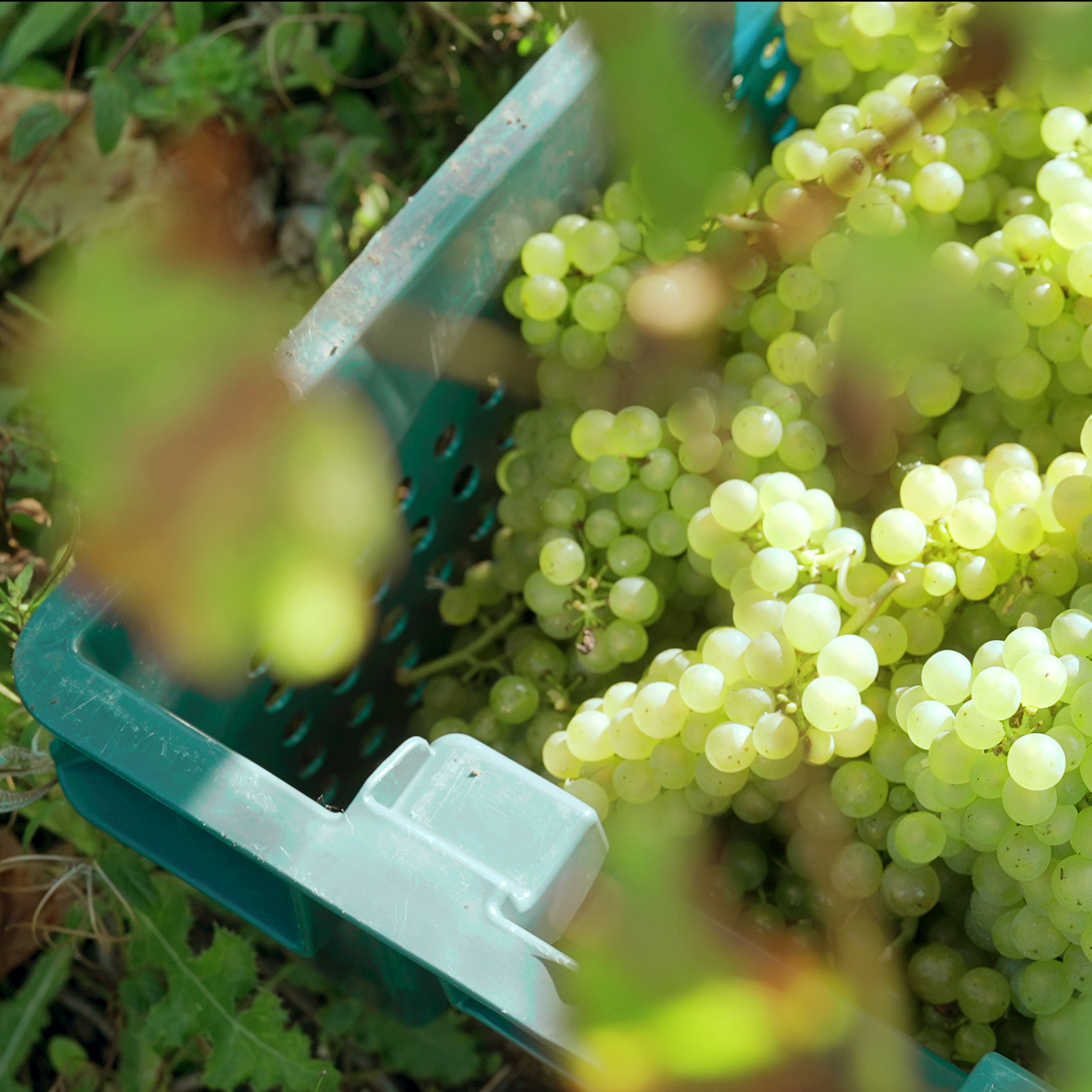Chardonnay is a prized grape in many of the world’s winegrowing regions, loved for its unmatched versatility, climatic adaptability and ageing potential. Chardonnay is the essence of Hambledon Vineyard, with our serendipitous location on the Paris Basin- a bed of belemnite chalk formed over 65 million years ago- a terroir made for chardonnay.
Where does Chardonnay Grow?
Chardonnay’s ‘homeland’ is in Burgundy, France, where some of the world’s finest examples are grown and made, with stylistic variations being seen in even this small patch of land- Chablis often showing brighter, more acidic examples, and the Cote d’Or showing the richer, deeper styles of the grape- with astonishing ageability. Of course, Champagne cannot be overlooked as a stellar region for chardonnay production- their sparkling wines a benchmark for quality and ubiquitous for celebrations everywhere. Of course, different styles of Chardonnay can be found else where in France, and, in fact, Europe- with stunning examples coming from Italy, Slovenia and more.
However, over the years, chardonnay has travelled from its ancestral home to the ‘new world’. Californian chardonnay is, of course, famous for its rich, oaked styles and its pivotal role in the 1978 ‘Judgement of Paris’- where Chateau Montelena’s napa valley Chardonnay famously won a blind tasting with against a variety of French Chateaux.
Australia is also famous for its rich, oaky styles of Chardonnay, which are a divisive style, however some of the premier examples come from the Margaret River region, which benefits from a cooling influence from the Pacific Ocean. South America also exhibits some interesting examples from countries such as Chile and Argentina.
What does chardonnay taste like?
The variety given by this grape variety makes it hard to give a generalisation of the taste- this all depends on the region, the weather conditions in any given year, and indeed, the winemaker behind it. Generally speaking, from a cooler climate, one can expect aromas of green apple, pear, and white flower, which a mouthwatering acidity, whereas a hotter climate chardonnay is likely to exhibit more tropical fruit, such as pineapple and papaya. When oaked, the profile can change entirely, with the wood infusing flavours such as vanilla and cloves.
What temperature should I serve Chardonnay at?
This again entirely depends on the style- chardonnay should be stored at 13-16°c (ideal cellar temperature), however, most will often be served much cooler, at around 8-10°c. If a style has more age, or is of a higher quality, take the bottle out of the fridge 30 minutes before serving, the slightly warmer temperature of the wine will do better to highlight the complex flavours and nuances of the bottle.
What to pair with Chardonnay?
Chardonnay is a very food-friendly grape- a blanc de blancs sparkling wine, for example, is a match made in heaven for oysters, whereas an oaky chardonnay is delicious alongside a pastry dish complemented with a creamy sauce- think a decadent chicken pie. Otherwise, dishes such as baked white fish, again with creamy sauces, or a well-made risotto. Avoid bitter foods, such as asparagus and turmeric, as these will make the wine taste sour.
At Hambledon Vineyard, we love Chardonnay and the breadth of beautiful wine styles it is able to create. We'll be raising a glass to one of our favourite varieties on Chardonnay Day, and beyond.




